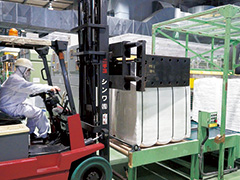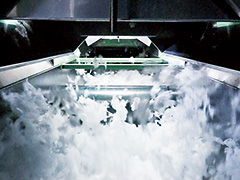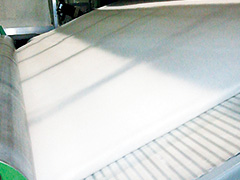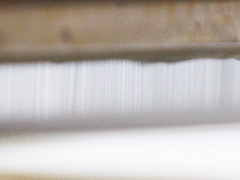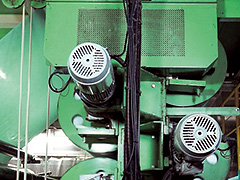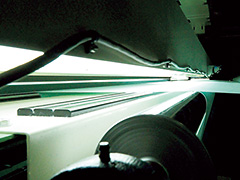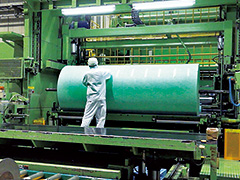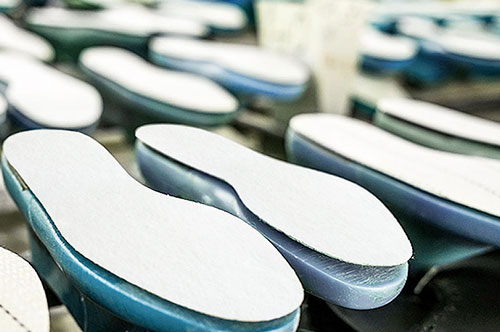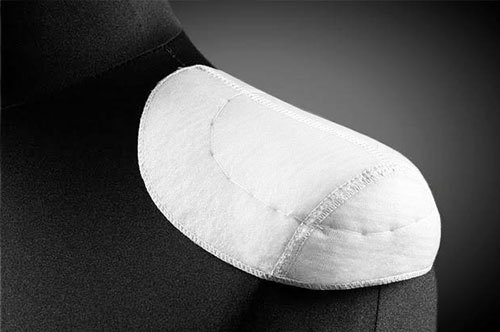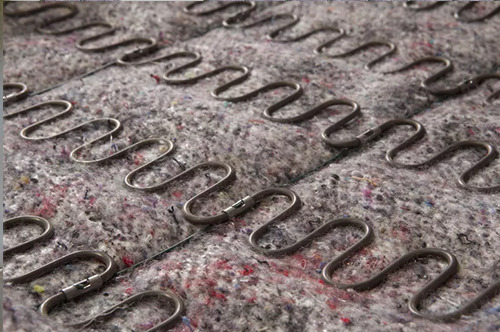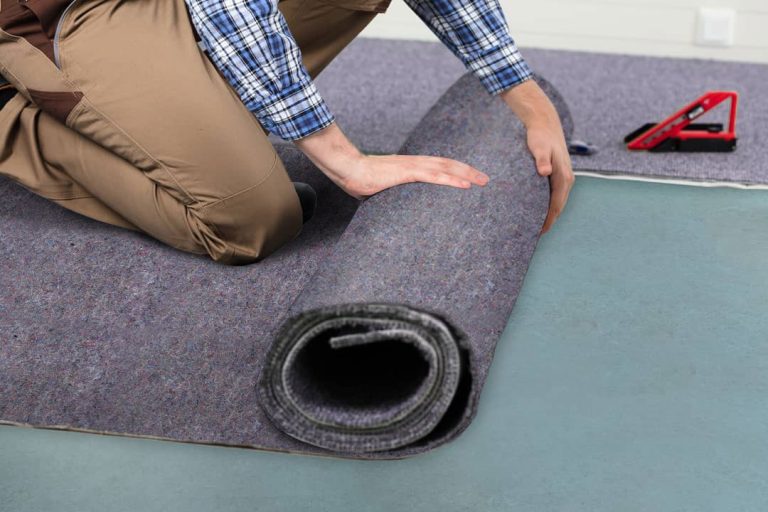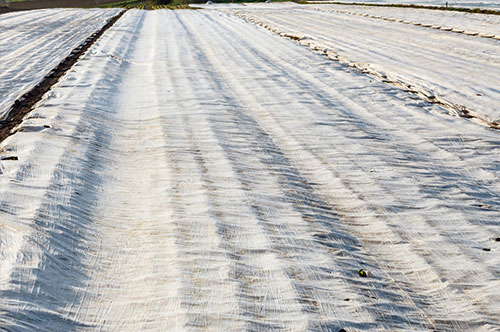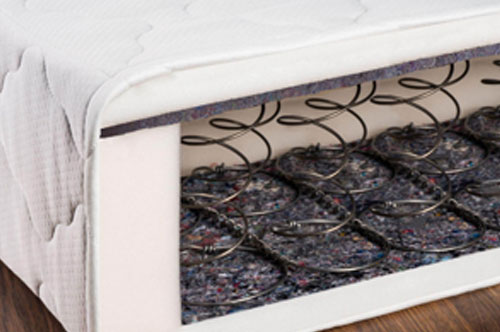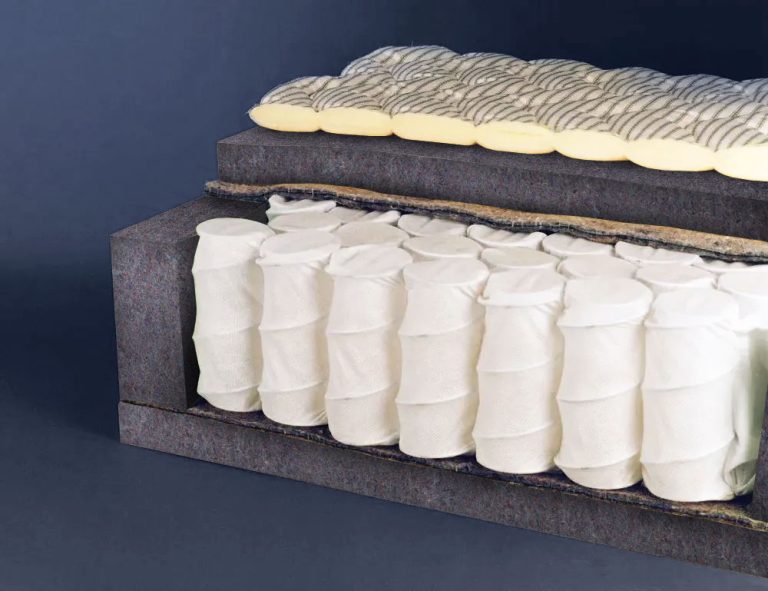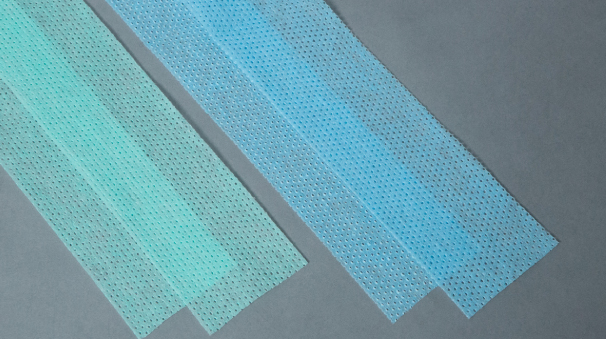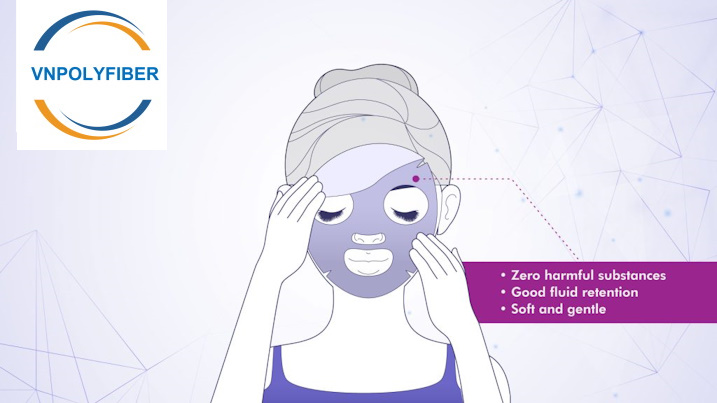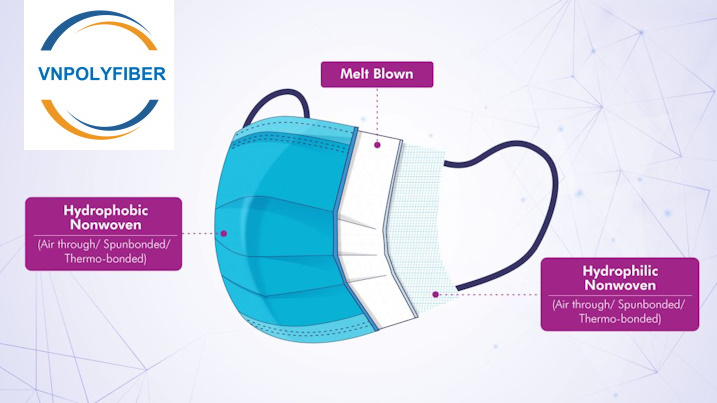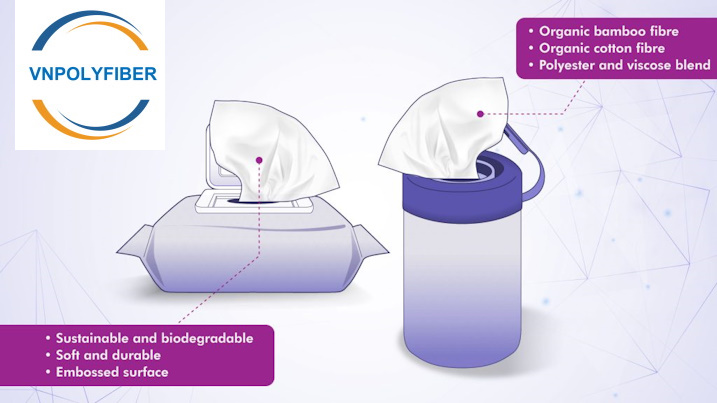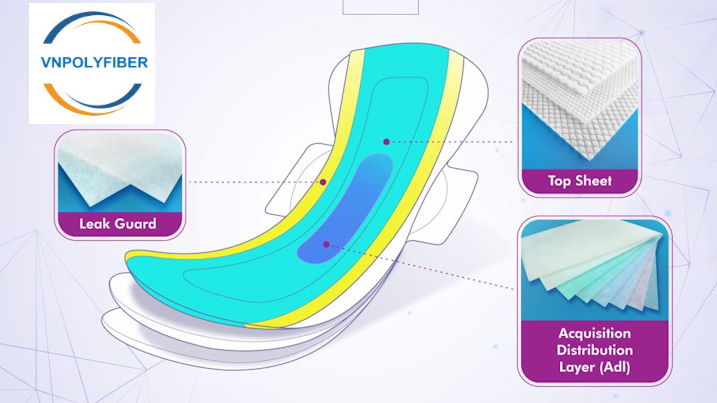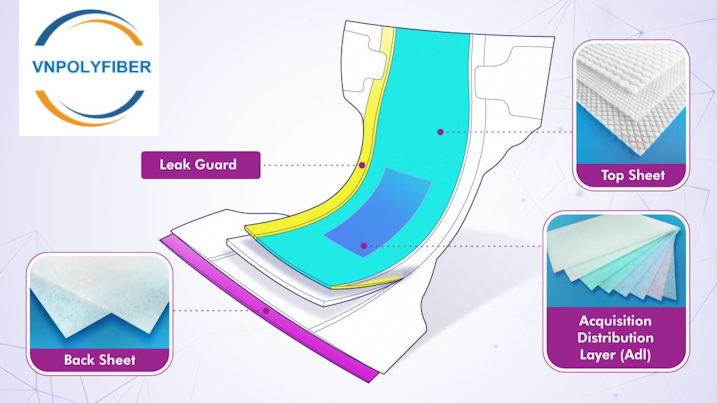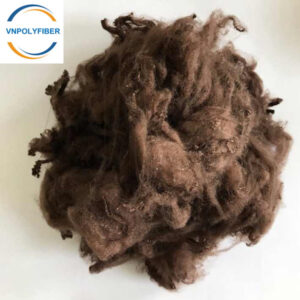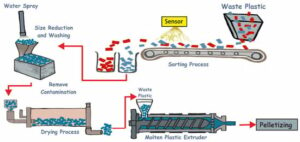What is Spunlaced non-woven fabric?
Nonwoven fabrics are sheets formed by interlocking fibers rather than traditional weaving techniques. Spunlaced non-woven fabric is produced by entangling fibers using a high-pressure water jet system. This type of non-woven fabric is known for its lack of binders or adhesives, making it ideal for hygiene-sensitive applications such as clothing and other fabric products.
Spunlace nonwoven fabric, also known as hydroentangled fabric, is a type of nonwoven fabric produced using a high-pressure water jets bonding process. This process involves using fine streams of water to entangle and interlock fibers together to create a fabric without the use of adhesives or thermal binding. The resulting fabric has a soft, textile-like feel and can be made from a variety of fibers, including polyester, viscose, and nylon.
Spunlace nonwoven fabric is known for its breathability, high absorbency, and strength. It is commonly used in applications such as wipes, facial masks, medical gowns and drapes, and filtration media due to its ability to trap and hold fine particles. It is also used in the manufacture of personal care products such as towels, bedding, and clothing.
One of the advantages of spunlace nonwoven fabric is that it can be produced with a wide range of fiber blends, allowing for customization of the fabric’s properties. It is also environmentally friendly, as it does not produce harmful emissions during production and can be recycled after use.
Overall, spunlace nonwoven fabric is a versatile material that offers many benefits in various applications, making it a popular choice in industries such as healthcare, personal care, and filtration.
What is spunlace?
Spunlace is a nonwoven fabric manufacturing process that involves the entanglement of fibers through mechanical, hydraulic, or water-jet techniques to create a strong and durable material. This method is utilized to produce fabrics with a wide range of properties, making them suitable for various applications across industries such as healthcare, personal care, automotive, and household products.
The production of spunlace fabrics begins with the selection of raw materials, which can include natural fibers like cotton, viscose, and wood pulp or synthetic fibers such as polyester, rayon, and polypropylene. These fibers are initially opened and blended to form a homogeneous fiber web.
The spunlace process involves high-pressure water jets that propel the fibers onto a moving conveyor belt or screen. The fibers are entangled and intertwined through the force of the water jets, creating a cohesive fabric structure. The entanglement of fibers results in a fabric that is strong, tear-resistant, and has excellent tensile strength.
During the entanglement process, the water pressure and the arrangement of the fibers can be adjusted to achieve specific fabric characteristics. The resulting fabric can vary in terms of thickness, density, softness, and absorbency, making spunlace suitable for a diverse array of applications.
One of the key advantages of spunlace fabrics is their exceptional softness, which makes them highly desirable for use in sensitive applications such as baby wipes, facial wipes, and personal care products. The fabric’s gentle texture is often preferred for its comfort and suitability for delicate skin.
Moreover, spunlace fabrics possess excellent absorbent qualities, making them ideal for products like medical dressings, cleaning wipes, and industrial wipes. Their high absorbency allows them to effectively retain liquids, making them efficient for cleaning surfaces or absorbing fluids in medical settings.
In addition to their softness and absorbency, spunlace fabrics can be engineered to exhibit specific properties such as breathability, elasticity, and resistance to chemicals or abrasion, depending on the intended use.
The versatility of spunlace fabrics has led to their widespread adoption in various industries, including the manufacturing of hygiene products, medical supplies, filtration materials, apparel, and household wipes. As technology continues to advance, innovations in the spunlace manufacturing process contribute to the development of new applications and improved fabric characteristics, further expanding its utility across diverse industries.
What is the difference between Spunlace Nonwoven and Spunlace?
The terms “Spunlace nonwoven” and “Spunlace” are utilized within the textile industry to denote a particular fabric production method and the resulting fabric. While these terms may appear similar, a clear distinction exists between them, primarily based on their usage and context within the textile manufacturing process.
Spunlace Nonwoven Fabric:
Spunlace nonwoven fabric specifically refers to a type of nonwoven material created through the spunlace process. This manufacturing method entails entangling fibers using high-pressure water jets, eliminating the need for weaving or knitting. Typically composed of natural or synthetic fibers such as cotton, viscose, polyester, or blends thereof, spunlace nonwovens exhibit properties like strength, softness, absorbency, and tear resistance.
The production of spunlace nonwoven fabrics commences with the selection of raw fibers, which are then opened, carded, and formed into a loose web. This fiber web undergoes entanglement and interlacing through high-pressure water jets, resulting in a cohesive fabric structure. The versatility and desirable characteristics of spunlace nonwoven fabrics make them suitable for a wide array of applications across various industries, including hygiene products, medical dressings, industrial applications, filtration materials, apparel, and household cleaning wipes.
Spunlace Fabric:
The term “Spunlace” alone can have a broader connotation, encompassing both the spunlace process and the resulting fabric, depending on the specific context. In some instances, “Spunlace” may refer to a range of fabrics produced using this method, including those utilized as substrates for coatings or laminations to enhance functionalities like water repellency, flame resistance, or barrier properties.
In conclusion, the distinction between “Spunlace nonwoven” and “Spunlace” lies in their specificity: spunlace nonwoven denotes the fabric produced through the spunlace process, while “Spunlace” may include both the fabric and the broader process, incorporating variations that undergo additional treatments or enhancements beyond the basic spunlace nonwoven fabric.
Production process of spunlace nonwoven fabric
The production of spunlace nonwovens necessitates a thorough comprehension of the materials involved as well as advanced technical skills to oversee modern production equipment.
The type of fibers used and the specific process parameters can be adjusted to create spunlace nonwoven fabrics with different properties. For example, fabrics made with a high percentage of synthetic fibers will be stronger and more durable, while fabrics made with a higher percentage of natural fibers will be softer and more absorbent.

1. Procurement of Raw Materials
Our primary raw materials consist of rayon, polyester, and other staple fibers, sourced from reputable fiber manufacturers. These materials are compressed and packaged in batches weighing 200 to 300 kg, with the option to blend fibers based on specific property requirements.
2. Mixing and Loosen Fiber
The compressed fibers are meticulously loosened and mixed to ensure a consistent blending ratio and weight distribution, setting the foundation for the subsequent processing steps, such as carding.
3. Carding Process
Through a series of rolls equipped with tooth-shaped metal wires, the fibers are transformed into a sheet-like form known as a “web”. The uniformity of this web is crucial in the carding process, showcasing our advanced technological capabilities .
4. Fiber Bonding
Following carding, the fibers within the web are entangled using high-pressure water streams, creating a durable sheet with enhanced strength.
Fine streams of high-pressure water are used to entangle and interlock the fibers together. The water is sprayed onto the web and the pressure and speed of the water jets are adjusted to optimize the entanglement process.
5. Drying and Fusion Bonding
We employ a drying method to eliminate moisture from the sheet and achieve fusion bonding of heat-fusion fibers in a sheath-core structure, further enhancing the fabric’s integrity.
The fabric is then dried to remove excess moisture. This can be done through a variety of techniques, such as through hot air ovens or infrared radiation.
6. Quality Inspection
Every non-woven fabric undergoes a rigorous inspection process post-drying to identify and address any potential contaminants, ensuring a pristine final product.
7. Winding and Packaging
Upon successful completion of the inspection phase, the sheets are ready to be wound into various widths and lengths, facilitating efficient packaging and distribution.
The finished fabric is then treated with various finishes, such as softeners and antimicrobial agents, to enhance its properties.
Some of Nonwoven products
1. Airlaid nonwoven materials
A selection of different fibers and blends can be utilized to produce products that are suitable for a diverse range of applications.
When bonded thermally using air through, airlaid nonwoven materials can exhibit high elasticity and flexibility.
Airlaid nonwoven materials offer an excellent padding effect similar to textile fabric, making them a suitable alternative to foam in mattresses.
Due to their porous nature and ability to be densely packed, airlaid nonwoven materials are commonly used in applications that require sound insulation and absorption.
2. Carded thermalbond
Carded nonwovens are a suitable option when consistency and aesthetic appeal are of significance.
A diverse range of thicknesses, weights, and colors are accessible.
Different types of fibers and blends can be utilized, with textures ranging from soft to rigid.
These materials exhibit exceptional resilience, durability, and drainage properties, rendering them suitable for application as Geotextile fabric.
3. Needle punch
Needle punch nonwovens have excellent loft and elongation properties when no additional bonding or processing is applied.
When subjected to thermal bonding using a calender machine, needle punch nonwovens exhibit high toughness and tear resistance.
A wide range of fibers and blends can be utilized in the production of these nonwovens.
The characteristics of needle punch nonwovens, such as thickness, softness, toughness, and pliability, can be tailored to meet specific requirements.
Needle punch nonwovens are available in various thicknesses, weights, and colors to cater to diverse preferences.
4. Stitch bonded nonwovens
The texture of the material ranges from exceptionally soft to extremely stiff.
The surface is flat, making it suitable for a diverse array of printing techniques.
Stitch bonded nonwovens exhibit strong tensile strength.
They serve as an effective reinforcement for a variety of sports shoe linings.
These nonwovens possess high voluminosity, softness, good absorbent properties, elasticity, and air permeability.
Applications of nonwoven fabric in Apparel
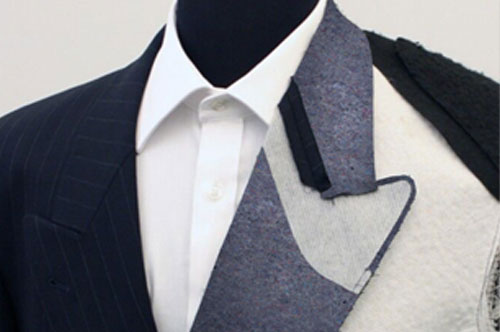
Interlining & interfacings
The purpose interlining is to add warmth, body and drape to a garment, while the purpose of interfacing is to provide structure. Nonwoven fabrics are believed to improve the fit and overall look of a garment. Nonwoven fabrics can also help to improve the durability of a garment.
Shoe lining & insoles
Nonwoven fabrics play important roles on the production of shoes. The reason shoe manufacturers use nonwoven fabrics as shoe lining & insoles is to cut costs. Nonwoven fabrics are guaranteed to be cheaper than other material.
Underwear, bras & shoulder pads
Foams are usually used for padding on underwear, bras & shoulder pad. Due to the environmental awareness, more nonwoven fabrics are used. Nonwoven fabrics can be made very dense or soft, thick or thin, while maintaining good padding effects.


